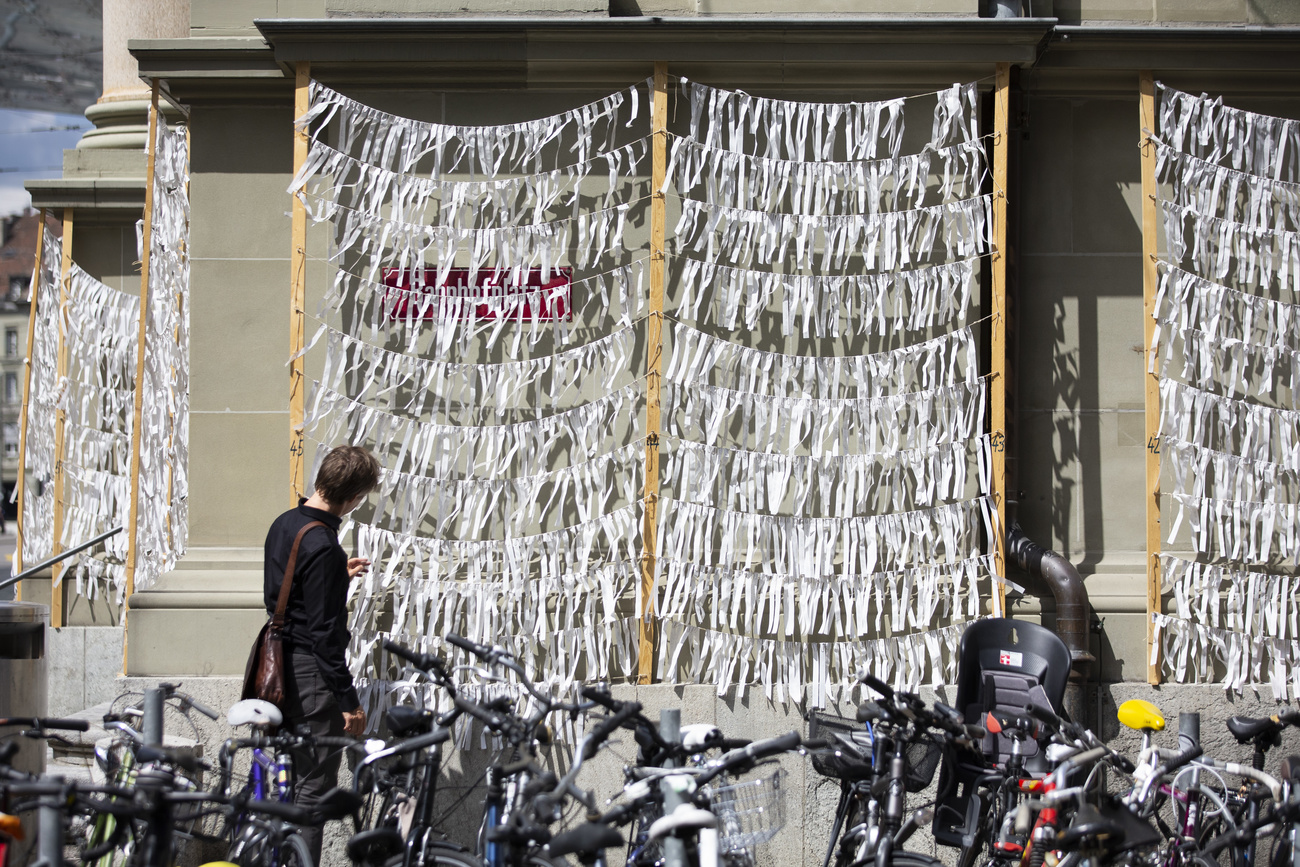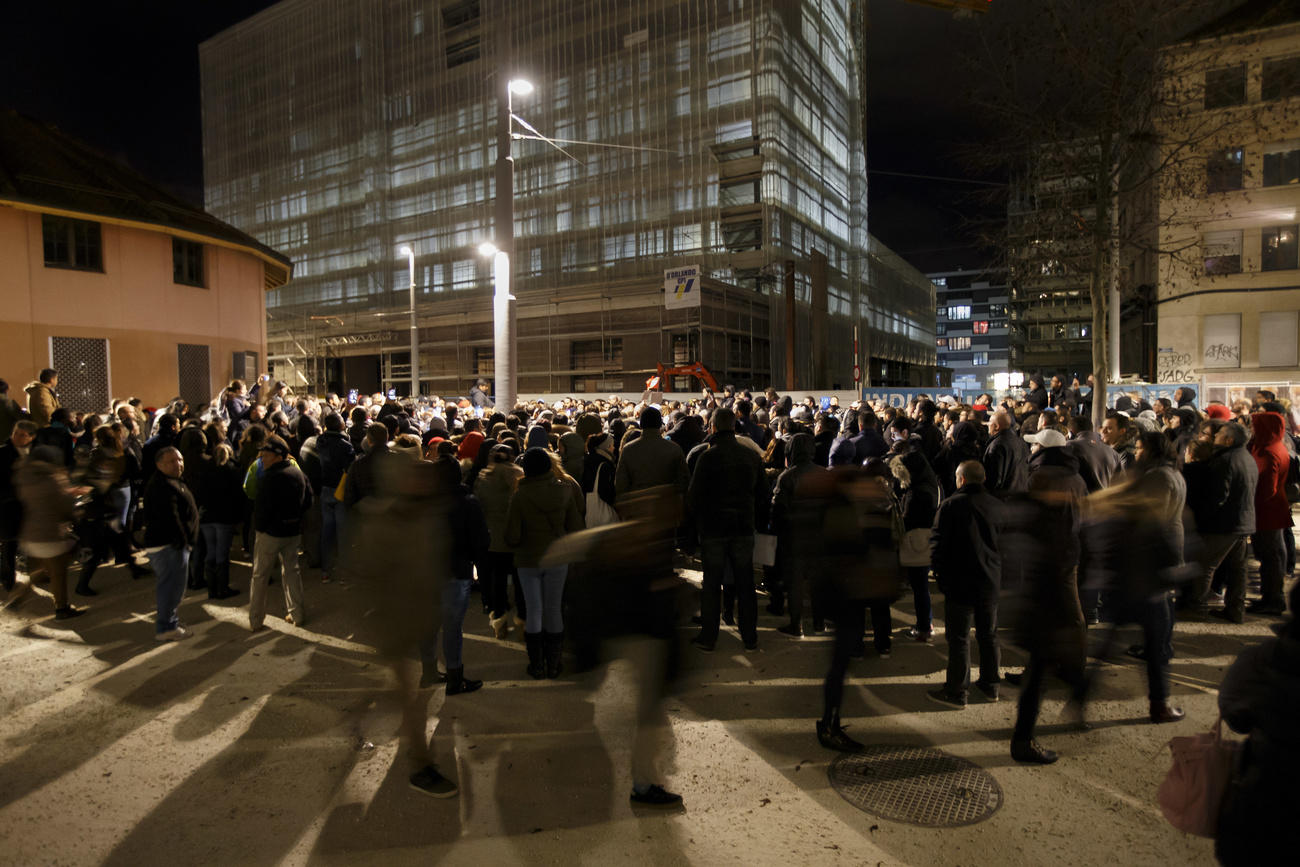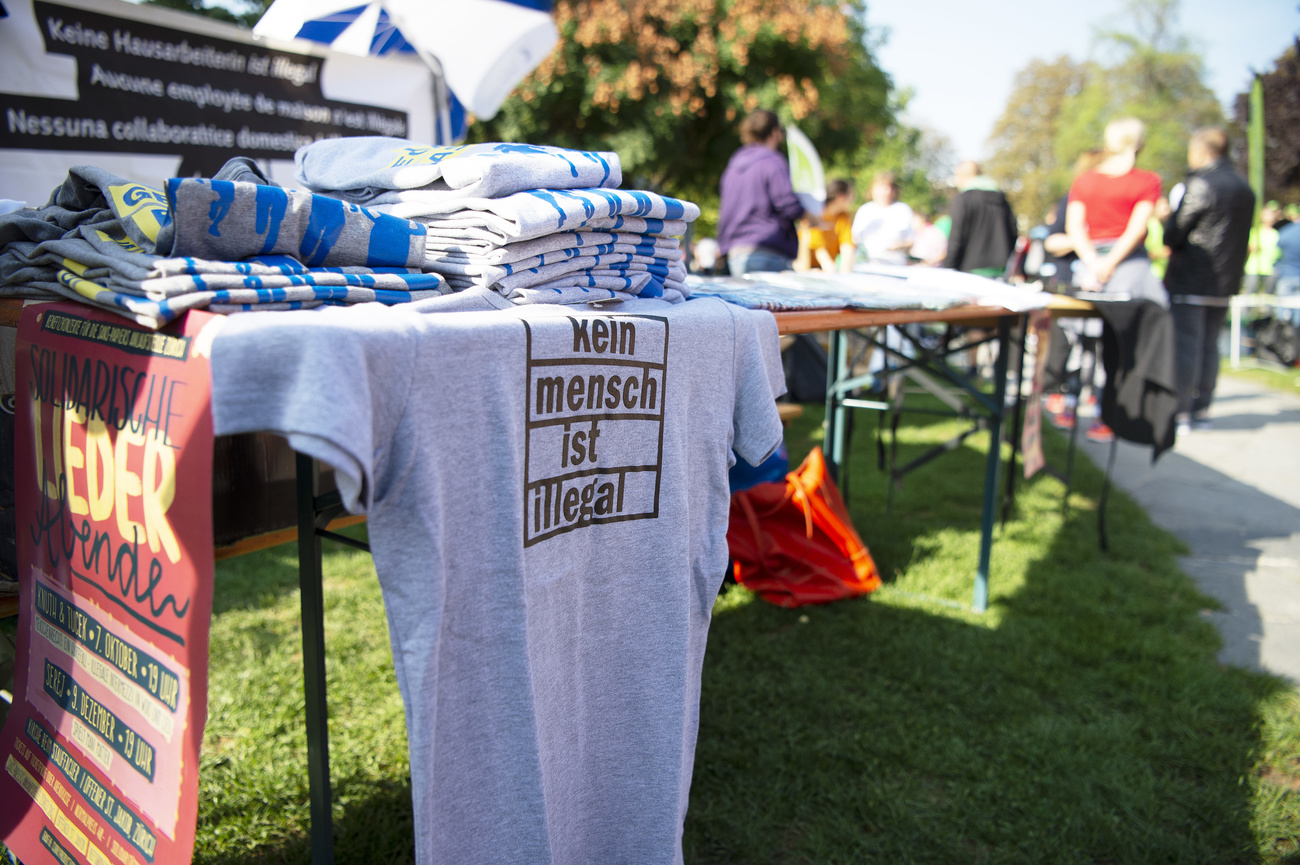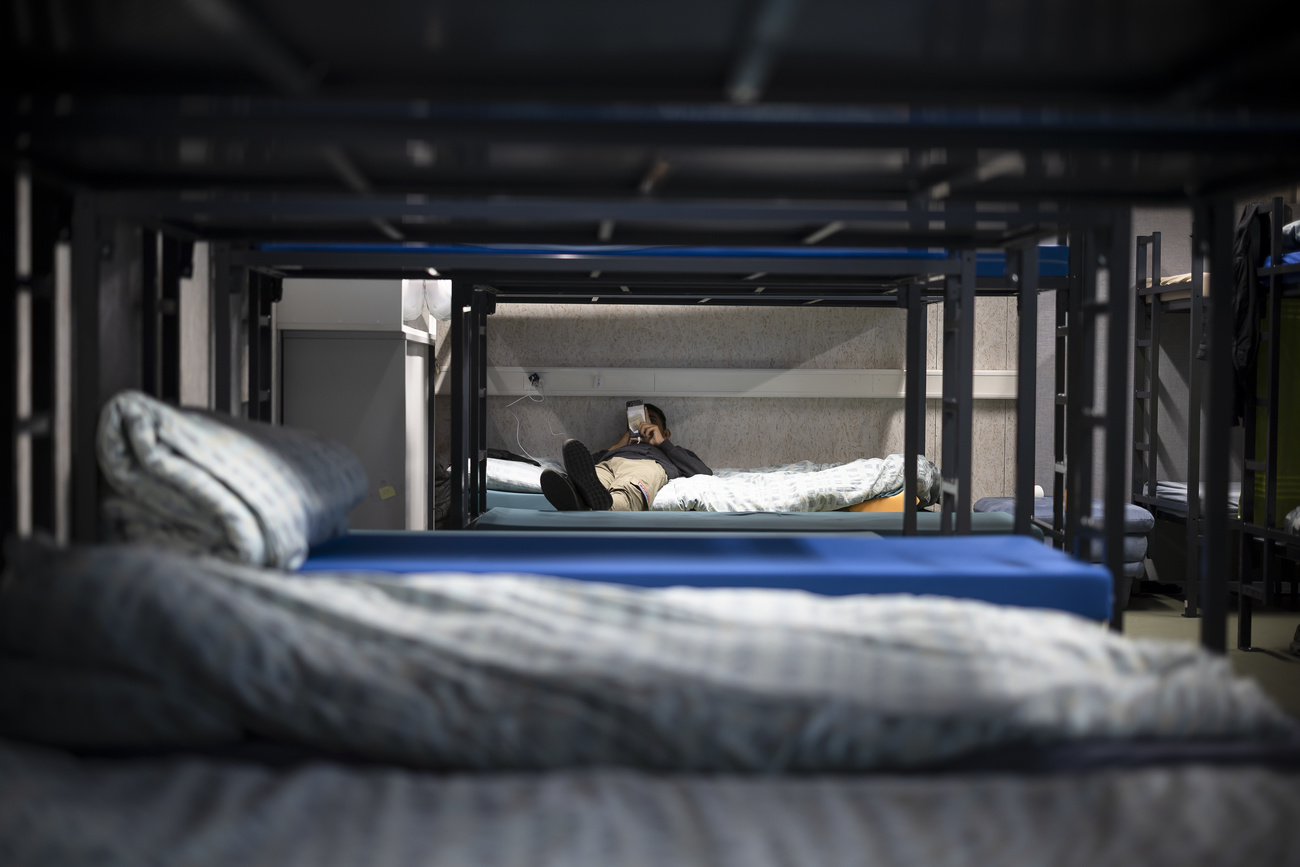
Bern becomes a ‘safe harbour’ for migrants – what does this mean?

The Swiss capital has joined a network of German cities declaring themselves “safe harbours” for refugees and migrants – flying in the face of national policy.
The Canary Islands usually come to mind as a holiday destination for European tourists. But currently they’re seeing arrivals of another kind. In January, over 7,000 people from West Africa landed on the Spanish islands, packed into small boats after journeys of up to 15 days. Others died en route. Many were from Senegal, where there is socio-political unrest. The Canary Islands authorities are struggling to deal with the situation after 2023 already saw a 150% jump in such migration.
Some 3,500 kilometres to the northeast, landlocked Bern now wants to help. This week authorities in the Swiss capital declared the city to be a “safe harbour”: that is, willing to “directly admit and accommodate people rescued at sea” and to take in more refugees generally. The declaration is “another step in Bern’s engagement for a humanitarian and active asylum and refugee policy”, it wroteExternal link.
What does this mean? Given that Bern is 450km from the nearest coastline, it can’t open a port to boats. Neither can it unilaterally take in more asylum seekers; in Switzerland, federal authorities decide on admissions, before dividing applicants among the 26 cantons.
Speaking to Der Bund newspaper, Bern’s social affairs minister Franziska Teuscher admittedExternal link that the declaration changed nothing in terms of legal capabilities. But it’s not just symbolic, she said. Rather, it would reinforce Bern’s efforts to integrate and include refugees once arrived. We provide a safe harbour through “a culture of welcome”, Teuscher said.
The declaration is also a means to lobby for more local power in migration policy, which Bern says is “too limited”. It thus builds on the “alliance of cities and municipalities for refugee admissions”, an April 2020 initiative by the eight biggest Swiss cities, which jointly said they were willing to take in more refugees than they were being allocated.
However, as the Zurich social affairs department writes on its websiteExternal link, “although these cities [the number has since grown to 16] are prepared to house and care for additional refugees, the federal government has unfortunately not taken up the offer”. According to the WOZ newspaper, the argument consistently given by federal authorities is that the legal framework doesn’t allow it.

More
Do sanctuary cities exist in Switzerland?
‘Indefensible conditions’
As the first Swiss city to declare itself a “safe harbour”, Bern has now taken its efforts across the border by signing on to a project organised by SeebrückeExternal link (“Sea Bridge”): a German civil society group which calls for a “migration policy based on solidarity” and an end to the “indefensible conditions at Europe’s outer borders”.
Seebrücke sees itself as part of a local “countermovement” against national and European migration policy, it writes. As one of its projects, the “safe harbour” initiative lays out a list of eight aims for cities, including to take in more refugees, to network with other cities, and to support sea rescue missions.
As of today, it has 322 members, including big cities such as Berlin and Munich – all except two (Salzburg in Austria and now Bern) are in Germany. Concrete impact is hard to gauge, but over half of the cities have fulfilled just one or two of the eight criteria, while none has achieved all eight – mainly because, as the organisation writes, cities are “blocked” from taking in more refugees by national policies.

More
Local voters grant Zurich ‘sanctuary’ status
Funding rescue missions
Yet cities – and not just those in the Seebrücke network – have run against national policy in other ways in recent years. In 2018, the ports of Naples and Palermo openedExternal link their (literal) harbours to migrant rescue boats after the Italian government had moved to crack down. Cities like Milan and Barcelona have acceptedExternal link migrants deemed to be “illegal”. Last year, Bern took concrete action by financing the Mediterranean rescue boat “Sea-Eye 4” to the tune of CHF70,000 ($79,420).
However, such donations can also be controversial, in that they support humanitarian rescue missions at odds with the policies of say, Italy (a Swiss neighbour) or Libya (whose coastguard has been supported by the European Union).
Contacted by SWI swissinfo.ch, SOS Méditerranée, an organisation which carries out such rescue missions, had no direct comment on Bern’s efforts. When it comes to political demands, Deputy General Director Elliot Guy said, SOS Méditerranée reiterates its calls for “a coordinated rescue and disembarkation mechanism to reduce mortality at sea and facilitate our humanitarian mission” – that is, the setting up of an “operational and efficient maritime rescue coordination centre” with “sufficient air and sea resources”.

More
Why Switzerland is piloting a 24-hour asylum procedure for North Africans
‘Surge in suffering’
At the European level, migration policy might indeed be becoming more coordinated – but not in the way all activists would like. Just before Christmas, the EU agreed a “New Pact on Migration and Asylum” to make procedures like screening asylum requests in the bloc more uniform.
The plan aims for more solidarity in sharing 30,000 new migrants per year across member states, but it also aims to clamp down on irregular migration and speed up processing of claims – including of those “picked up at sea”. The pact was harshly criticised by NGOs including Amnesty International, which warnedExternal link of a “surge in suffering” in refugee camps at Europe’s external borders.
In non-EU member Switzerland, the deal also met with mixed reactions. While the Swiss Refugee Council echoed Amnesty’s criticism, Justice Minister Elisabeth Baume-Schneider welcomed the “significant political step”. Migration authorities will now examine which aspects of Swiss policy will need to adapt to the new EU approach.
There are already some signs that Switzerland is tightening asylum policy as well: this week, the State Secretariat for Migration (SEM) confirmed that more rejected asylum-seekers than ever were returned to their countries of origin last year, thanks to – among other things –cooperation with governments in countries such as Algeria. Today, the government announced it would draw up a feasibility report on the possible expulsion of asylum seekers to third countries.
As for safe harbour Bern, its position on all these shifts seems clear: it laments “a European refugee policy based on deterrence, walling-off and looking away”.
Edited by Reto Gysi von Wartburg/ts

In compliance with the JTI standards
More: SWI swissinfo.ch certified by the Journalism Trust Initiative





























You can find an overview of ongoing debates with our journalists here . Please join us!
If you want to start a conversation about a topic raised in this article or want to report factual errors, email us at english@swissinfo.ch.